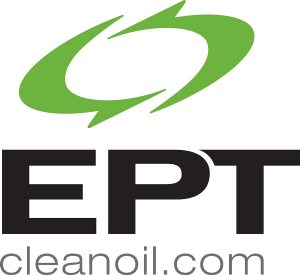 Presentations on turbine lubricants and/or their maintenance are oft-discussed subjects at user-group meetings. Plus, you can expect to see a half-dozen or more companies in the exhibit hall offering fluids and varnish-removal systems—all competing for your business. Having so much information from disparate sources can make it difficult for a user to decide on the optimal lubrication and treatment options for his or her plant.
Presentations on turbine lubricants and/or their maintenance are oft-discussed subjects at user-group meetings. Plus, you can expect to see a half-dozen or more companies in the exhibit hall offering fluids and varnish-removal systems—all competing for your business. Having so much information from disparate sources can make it difficult for a user to decide on the optimal lubrication and treatment options for his or her plant.
How about starting anew? Listen to EPT’s Matthew G Hobbs (video below) who recommends that you treat your turbine fluid as an asset, not a consumable. You’ll probably make better decisions if you do. Hobbs “knows his stuff” and has the sheepskin and experience to support his research and findings. Plus, he speaks clearly and is an excellent “explainer” of things you probably should know. The presentation is only an hour.
Hobbs encourages you to understand and use the tools at your disposal to eliminate unpredictable oil-related failures, which can cause astronomical unbudgeted expenses. His best-practices recommendations include these:
-
- Select high-quality lubricants from reputable manufactures/suppliers.
- Exercise caution with aftermarket additives.
- Demand reliable oil-analysis data.
- Use a conditioning system to remove varnish-precursors as they form.
- Clean your oil so it can clean your system.
Hobbs shows by way of a case study how to keep your lubricant costs affordable and predictable. Recall that most owner/operators generally decide on fluid replacement when the acid number increases by two- or three-fold and additives decrease by 75%. In round numbers, this means that a nominal 10% annual rate of additive consumption equates roughly to a 10-year lifetime for your oil—assuming conditions remain the same over time. A polling question during the presentation indicated about half of the respondents were getting 10 years or less from their lubricants.
The details of a 10-year case study conducted by EPT for a plant using its ICB™ ion-exchange technology since COD to maintain the fluid in top condition, revealed an additive level at the end of a decade of service of 91%; the acid number has never increased. The oil is expected to serve for another 10 years—at least.
The paradigm shift, Hobbs says, is that by annually adding 5% top up with the existing brand of new oil, in conjunction with ICB conditioning, provides a step change in how the oil ages.


